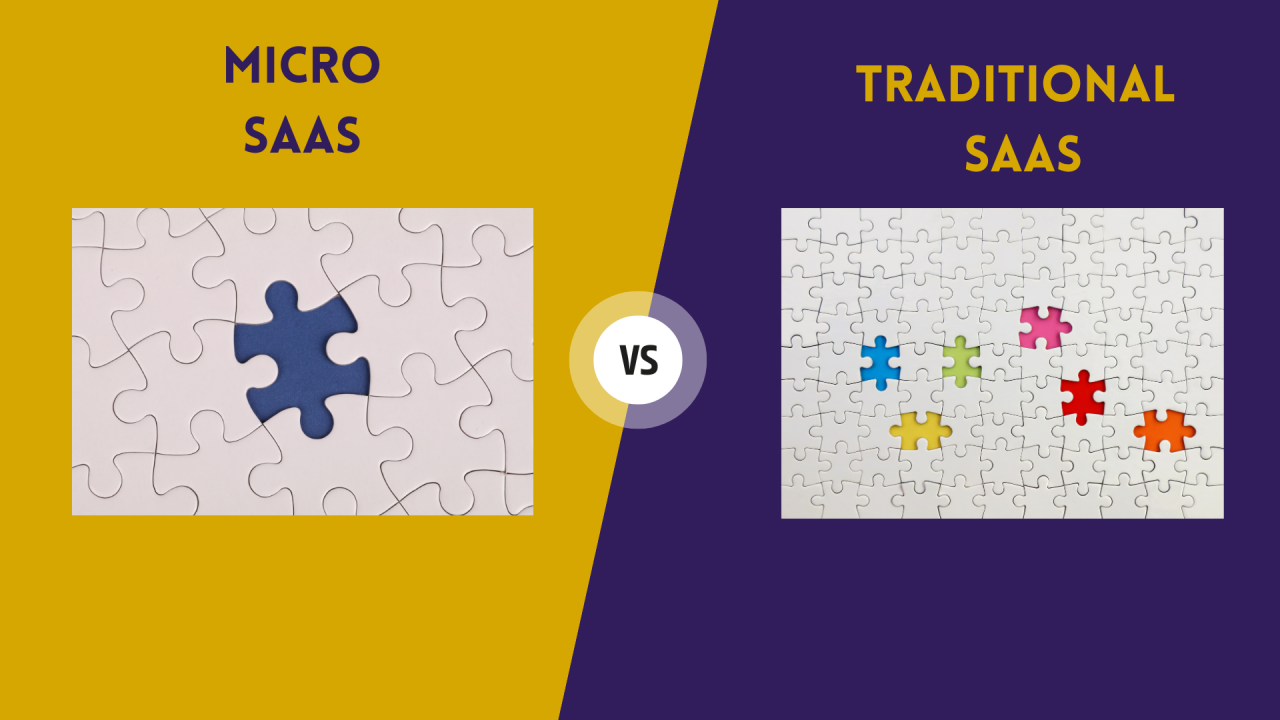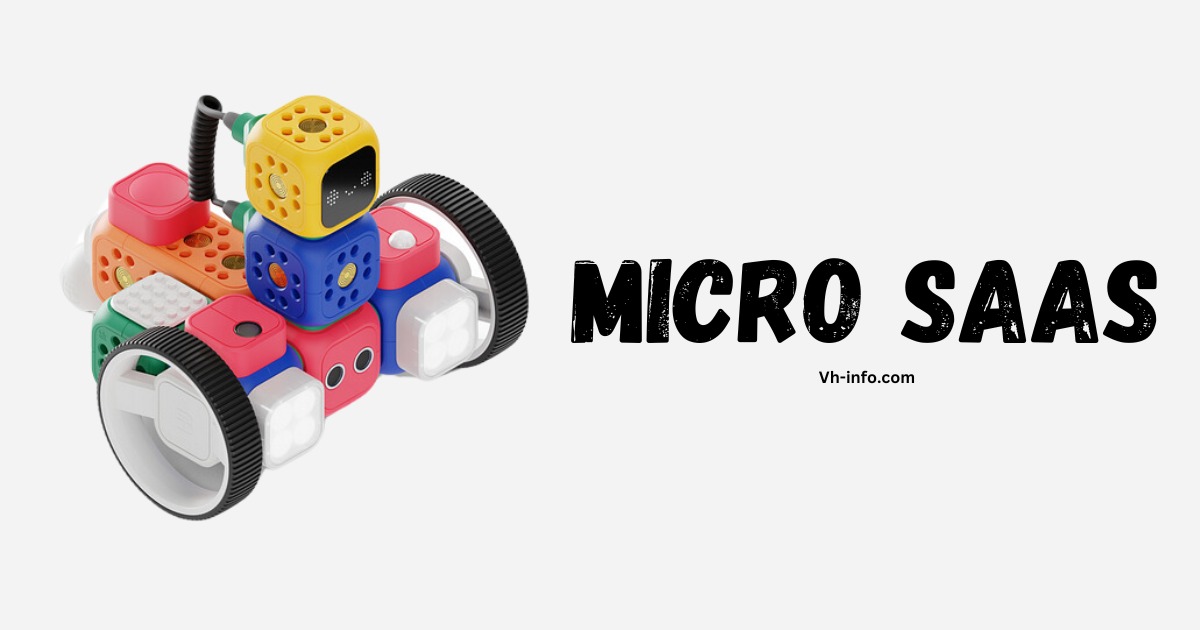In the rapidly evolving world of software as a service (SaaS), a new breed of nimble, focused SaaS startups is making waves: micro SaaS. These small but mighty SaaS companies are proving that you don’t need a massive team or millions in funding to build a successful SaaS business.
Zeroing in on a specific niche market and efficiently solving a targeted problem, savvy entrepreneurs are launching profitable micro SaaS products with minimal resources.
At VH Info, we’re all about actionable insights to help you succeed in the competitive SaaS market. In this ultimate guide, we’ll dive deep into the micro SaaS phenomenon, exploring what micro SaaS is, how it differs from traditional SaaS, and why this lean business model is so appealing.
We’ll also break down the key steps to launching your own micro SaaS, from generating your initial idea to acquiring your first customers and beyond.
Whether you’re a solo founder looking to bootstrap your way to SaaS success or an established company exploring new growth opportunities, this guide will give you the knowledge and tools you need to launch a thriving micro SaaS business. Let’s get started!
What is Micro-Saas?

At its core, micro SaaS follows the same fundamental model as traditional SaaS: providing web-based software to customers on a subscription basis.
The main distinction lies in the scale and scope. Traditional SaaS companies typically target a wide audience with a detailed product, whereas micro SaaS businesses adopt a more focused strategy.
A micro SaaS is typically run by a very small team, often just a solo founder, with the goal of addressing a narrow, specific need within a niche market. Rather than trying to be everything to everyone, micro SaaS products zero in on doing one thing exceptionally well for smaller groups within a particular target audience, creating a dedicated user base.
This focused approach allows micro SaaS startups to get to market quickly and start generating revenue without the high upfront costs and lengthy development cycles of larger-scale SaaS products.
Micro SaaS companies can quickly adjust their products based on user feedback by remaining agile and efficient, thus enhancing their ability to cater to their target customers.
Benefits of Micro-SaaS
The micro SaaS model offers a host of compelling benefits for entrepreneurs and small teams looking to break into the SaaS market:
- Low overhead: With a small team, narrow focus, and limited feature set, micro SaaS businesses have much lower operating costs than their larger counterparts. This makes it possible to bootstrap the business and reach profitability quickly.
- Rapid time-to-market: By focusing on a single, specific use case, micro SaaS products can be developed and launched much faster than more complex, full-featured SaaS platforms. This speed allows micro SaaS startups to start generating revenue and validating their idea with real customers sooner.
- Agility: The lean nature of micro SaaS businesses makes them incredibly agile and responsive to customer needs. With a tight feedback loop and the ability to quickly ship new features and improvements, micro SaaS companies can rapidly evolve their products to better serve their target market.
- Niche expertise: By focusing on a narrow niche, micro SaaS founders can position themselves as true experts in their domain. This specialization helps to establish trust and credibility with potential customers, making it easier to attract and retain a loyal user base.
- Recurring revenue: Like all SaaS businesses, micro SaaS products generate predictable, recurring revenue through subscriptions. This reliable income stream provides a solid foundation for sustainable growth.
Difference Between SaaS and Micro-SaaS

While micro SaaS and traditional SaaS share the same core model, there are some key differences between the two approaches:
Time Taken to Launch Product
Traditional SaaS products often require extensive development cycles to build out a broad range of features and capabilities.
In contrast, micro SaaS products are designed to be launched quickly, with a narrow feature set focused on solving a specific problem. To support this agility, it’s important to understand how to set up preview environments that allow for rapid testing and iteration before deployment. This streamlined approach allows micro SaaS businesses to get to market and start generating revenue much faster.
Business Expense
Launching and operating a traditional SaaS business can be expensive, with high development costs, extensive marketing budgets, and the need to support a large team. It’s crucial for entrepreneurs to have a clear understanding of business expense categories to effectively manage their finances. These categories can include everything from development costs to operational overhead, which helps ensure that the business remains sustainable and profitable
Micro SaaS businesses, on the other hand, are designed to keep expenses lean. By focusing on a specific niche and limiting the scope of the product, micro SaaS startups can often bootstrap their way to profitability without the need for significant outside funding.
Investor Complications
Traditional SaaS companies often rely on venture capital or other outside investment to fuel their growth.
While this funding can provide the resources needed to scale quickly, it also comes with added pressure and complexity, as founders must answer to investors and meet aggressive growth targets.
Micro SaaS businesses, in contrast, are often self-funded, giving founders more control over the direction of the company and the freedom to grow at a sustainable pace.
Why to Build Micro SaaS Business?
There are many compelling reasons to consider launching a micro SaaS business:
- Accessible entry point: With lower startup costs and a faster path to revenue, micro SaaS offers an accessible entry point into the SaaS market for solo founders and small teams. This makes it an appealing option for entrepreneurs looking to bootstrap their way to success.
- Lifestyle business potential: For many founders, the goal of starting a micro SaaS is not to build the next billion-dollar unicorn, but rather to create a sustainable, profitable business that supports their desired lifestyle. With a lean operation and predictable recurring revenue, a successful micro SaaS can provide a comfortable income and the freedom to work from anywhere.
- Opportunity for specialization: By focusing on a specific niche, micro SaaS founders can develop deep expertise and establish themselves as go-to authorities in their space. This specialization can help to differentiate the business and attract a loyal customer base.
- Potential for acquisition: While not every micro SaaS will get acquired, the lean, focused nature of these businesses can make them attractive targets for larger companies looking to expand their offerings or enter new markets. A successful exit can provide a significant payday for micro SaaS founders.
Cornerstones of Micro SaaS
To launch a successful micro SaaS, there are three key cornerstones to focus on:
Cornerstone # 1: Generating Idea
The first step in launching a micro SaaS is coming up with a viable idea. The best micro SaaS ideas typically arise from the founder’s own experience and expertise. Look for pain points or inefficiencies in your own work or hobbies, and consider how a focused software solution could address those issues.
It’s also important to validate your idea by researching the market and talking to potential customers. Look for evidence of demand for your proposed solution, and make sure there’s a willingness to pay for it.
At VH Info, we recommend using tools like Google Trends and keyword research to gauge interest in your micro SaaS idea.
Cornerstone # 2: Pricing Models
Choosing the right pricing model is critical for the success of your micro SaaS. The most common approach is a subscription model, where customers pay a recurring fee (usually monthly or annually) for access to the software. This provides a predictable revenue stream and aligns incentives between the business and its customers.
Other pricing options include usage-based pricing, where customers pay based on their level of use, and one-time fees for lifetime access. The key is to find a model that aligns with the value your product provides and the needs of your target market.
Cornerstone # 3: MVP
Once you’ve validated your idea and settled on a pricing model, it’s time to build your SaaS MVP (minimum viable product). The goal of developing a software MVP is to provide just enough functionality to solve your target customer’s core problem and start generating revenue.
Resist the temptation to pack in too many features at this stage. Focus on nailing the core use case and getting your product into the hands of real users as quickly as possible. You can always iterate and expand functionality based on customer feedback.
Top 10+ Micro-SaaS Ideas With Examples For 2024

To help spark your creativity, here are some promising micro SaaS ideas for the coming year, along with real-world examples of companies finding success in these niches:
1. Email Automation Software
Helping businesses streamline and optimize their email marketing efforts is a perennial need. A micro SaaS that provides easy-to-use email automation tools, such as templates, scheduling, and list management, could find a ready audience among small businesses and solopreneurs.
Example: Mailchimp, which started as a simple email marketing tool and has grown into a full-featured marketing automation platform.
2. Online Learning Community
With the rise of remote work and online education, there’s growing demand for virtual learning communities. A micro SaaS that provides a platform for hosting and delivering online courses, along with tools for community engagement and interaction, could be a hit with educators and learners alike.
Example: Teachable, which enables creators to build and sell their own online courses.
3. Payment Processing For Ecommerce
As more businesses move online, the need for simple, secure payment processing is only growing. A micro SaaS that provides streamlined payment tools for ecommerce sites, with features like fraud detection and recurring billing, could carve out a niche in this competitive space.
Example: Stripe, which started as a simple way for businesses to accept payments online and has grown into a comprehensive financial infrastructure platform.
4. Online Stock Imagery Platform
High-quality visual content is essential for businesses of all kinds, but finding and licensing the right images can be a challenge. A micro SaaS that curates and licenses stock photos, illustrations, and videos could be a valuable resource for content creators and marketers.
Example: Shutterstock, which began as a stock photography platform and has expanded to offer a wide range of visual content.
5. Learning Promotion Platform
Helping students study and master new subjects is an evergreen need. A micro SaaS that provides tools for creating and sharing study materials, such as flashcards and quizzes, could find a loyal following among students and educators.
Example: Quizlet, which started as a simple tool for creating and sharing flashcards and has grown into a comprehensive study platform.
6. Flight Price Collection Software
For frequent travelers, finding the best deals on flights is a constant challenge. A micro SaaS that aggregates and compares flight prices from multiple airlines and booking sites could be a valuable time-saver for cost-conscious travelers.
Example: Skyscanner, which began as a simple flight search engine and has expanded to offer price comparisons for hotels and car rentals as well.
7. Grammar and Spelling Checker
In the age of digital communication, the ability to write clearly and accurately is more important than ever. A micro SaaS that provides real-time grammar and spelling suggestions, with features like contextual analysis and customizable style guides, could be a valuable tool for writers of all kinds. In the age of digital communication, the ability to write clearly and accurately is more important than ever. Tools like the Attrock Grammar Checker give real-time grammar and spelling suggestions, with features such as contextual analysis and customizable style guides, making them valuable resources for writers of all kinds.
Example: Grammarly, which started as a simple grammar checker and has grown into a comprehensive writing assistant.
8. Remote File Sharing
With remote work becoming the norm, the need for secure, easy-to-use file sharing tools is only growing. A micro SaaS that provides streamlined file sharing and collaboration features, with strong security and access controls, could find a ready market among distributed teams.
Example: Dropbox, which began as a simple file syncing and sharing tool and has expanded to offer a range of collaboration and productivity features.
9. Remote Team Collaboration Suite
Managing projects and communication across remote teams can be a challenge. A micro SaaS that provides a suite of tools for task management, video conferencing API like iotum, and team chat could help remote workers stay connected and productive.
Example: Basecamp, which offers a streamlined set of tools for remote team collaboration and project management.
10. Mental Wellness Journal
In today’s fast-paced, high-stress world, more people are prioritizing their mental health and well-being. A micro SaaS that provides a digital journaling platform, with prompts and exercises for reducing stress and promoting mindfulness, could strike a chord with wellness-minded users.
Example: Headspace, which started as a meditation app and has grown into a comprehensive mental wellness platform.
11. Online Movie Night Planner
With social distancing measures still in place, many people are turning to virtual movie nights to stay connected with friends and family.
A micro SaaS that helps users plan and host online watch parties, with features like synchronized playback and group chat, could be a fun and timely addition to the streaming ecosystem.
Example: Teleparty (formerly Netflix Party), which enables users to watch Netflix, Disney+, Hulu, and HBO together remotely.
SaaS Trends and Market Research
To succeed in the competitive world of SaaS, it’s important to stay on top of the latest trends and technologies shaping the industry.
Here are three key trends to watch in the coming year:
AI

Artificial intelligence is rapidly transforming the SaaS landscape, enabling businesses to automate tasks, personalize user experiences, and extract valuable insights from data. From chatbots to predictive analytics, AI-powered features are becoming table stakes for many SaaS products.
As a micro SaaS founder, look for opportunities to leverage AI to enhance your product and deliver more value to your users. This could include using machine learning to improve search and recommendation engines, or natural language processing to enable more human-like interactions with your software—especially if you’re working as a market making software developer.
Collaboration Software

With remote work becoming the norm, demand for collaboration and productivity tools is soaring. From video conferencing to workflow management platforms, businesses of all sizes are looking for ways to keep their teams connected and aligned in a distributed work environment. Integrating tools like a meeting note taker can further enhance productivity by ensuring important discussions and action items are captured and shared automatically.
As a micro SaaS founder, consider how your product could help remote teams work together more effectively. This could include features for real-time collaboration, task management, or asynchronous communication. By positioning your product as a remote work solution, you can tap into a growing market opportunity.
MarTech Tools

Marketing technology, or MarTech, is a rapidly growing segment of the SaaS market. As businesses look to automate and optimize their marketing efforts, they’re turning to SaaS tools for everything from email marketing to social media management to customer relationship management (CRM).
As a micro SaaS founder, consider how your product could help businesses streamline their marketing workflows and drive better results. This could include features for lead generation, customer segmentation, or marketing analytics. By positioning your product as a MarTech solution, you can tap into a lucrative and growing market.
FAQ’s:
Are Micro-SaaS Startups Profitable?
Yes, micro SaaS startups can be highly profitable. By keeping costs low and focusing on a specific niche, micro SaaS businesses can generate significant revenue with a small team and limited resources. The key is to find a problem worth solving and to execute well on the solution.
Can a Micro SaaS Business Be Scaled Successfully?
Yes, a micro SaaS business can be scaled successfully, but it may require a different approach than scaling a traditional SaaS business. Rather than trying to capture a larger share of the broader market, micro SaaS businesses often focus on going deeper within their niche, adding new features and services to better serve their target customers. This focused growth strategy can be highly effective for micro SaaS companies.
How Do I Find a Good Micro SaaS Idea?
Look for pain points or inefficiencies in your own work or hobbies. Consider how a focused SaaS solution could address those issues. Validate your idea by researching the market and talking to potential customers.
Is External Investment Necessary For Starting a Micro SaaS Business?
No, unlike typical SaaS ventures, Micro SaaS businesses can often be self-funded without outside capital. This gives you more ownership and control over your business.
How Can You Handle Customer Support in a Micro SaaS Business?
Because you have a niche target market, you can handle most user customer support inquiries with a simple FAQ page on your website/ landing page. As demand increases, you can hire someone to deal exclusively with remaining customer service queries.
What is the Significance of Validating a Micro SaaS Idea?
Validating your Micro SaaS idea ensures there is a real need for the product and that it addresses a genuine problem in the market. Without validation, you risk building a product no one wants.
Conclusion
Micro SaaS is great for new software entrepreneurs. It’s about niche focus, low costs, and value delivery. Success comes from finding untapped markets, checking ideas, and adjusting with feedback. Stay efficient, flexible, and customer-focused to grow steadily.
As the SaaS landscape continues to evolve, the Micro SaaS model offers a promising path for entrepreneurs looking to make their mark. With the right idea, execution, and mindset, anyone can turn their software dream into a thriving Micro SaaS reality.
So why not start exploring the possibilities today?


